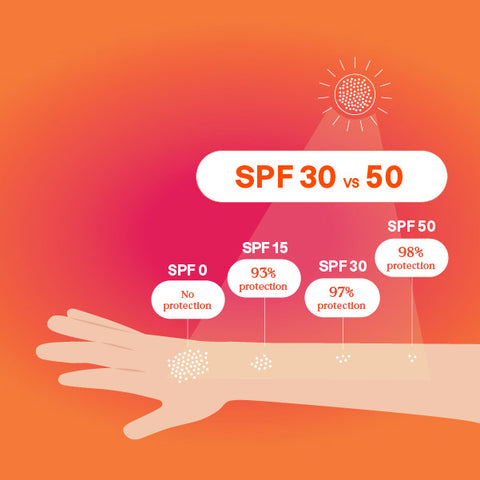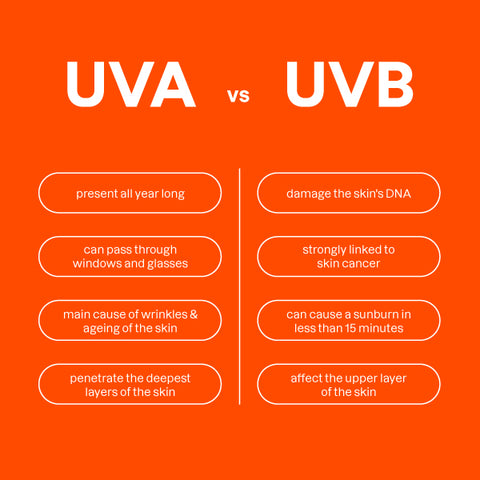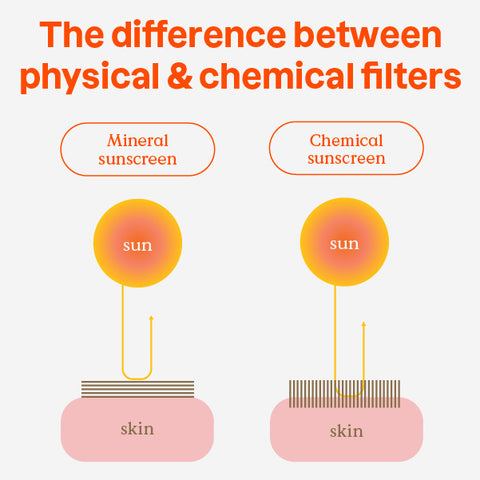
Summertime is right around the corner! And while this time of year is all about spending quality time outdoors with your family, enjoying sunny days by the pool and playing in the backyard, one thing remains important: suncare protection. Protect your family from the sun with your best ally this summer: an effective mineral sunscreen.
But with so many different types of sunscreens available on the market, how do you choose the best and most effective one for you and your family?
You probably have many friends and relatives who swear by sunscreen with a high SPF (sun protection factor) – which refers to how much sun protection a sunscreen provides to an average consumer – claiming it’s the safest way to protect their family from the sun’s harmful rays. In fact, people typically buy a sunscreen based solely on its SPF. You’ve probably even faced the choice at the store between SPF 30 vs SPF 50.
It is true that a higher SPF obviously provides more protection than a lower SPF, but most people do not use high SPF sunscreens correctly. Indeed, a high SPF gives consumers a false sense of security, which could increase the risk of cancer [1]. In fact, because the SPF is high, users feel better protected and may not tend to reapply sunscreen, while being overexposed to the sun.
According to the National Cancer Institute, the rate of new melanoma cases among American adults has tripled since the 1970s, despite the increase in sunscreen usage [2]. Of course, we are exposed to the sun more often, and melanomas are more commonly detected nowadays, but the fact remains that many people are still misinformed about the harmful effects of the sun and do not hesitate to spend long hours under the sun without thinking about reapplying sunscreen.
Are higher SPF sunscreens really the best option for you and your family?
It depends on your habits and preferences! If you opt for a high SPF, you must absolutely keep in mind that you will need to reapply it just as frequently as a lower SPF (every two hours and after swimming), as well as avoid the sun between 11 a.m. and 4 p.m. Additionally, it's best to stay in the shade and wear a hat or cap for optimal sun protection.
Here are three criteria to consider when choosing your sunscreen.
1. A high SPF does not mean foolproof protection
In recent years, many sunscreen manufacturers have been marketing products with SPFs of 70 or even 100, giving the impression that they provide two to three times more protection than an SPF 30.
Unfortunately, high SPFs can be misleading. Because people assume they’re better protected with a high SPF, they tend to spend more time in the sun and reapply sunscreen less often–increasing the risk of sunburns, melanoma and other types of skin damage. This is why some countries in Europe have capped SPFs at 50.
It should be noted that sunscreens with an SPF higher than 50 may contain a higher dose of chemical filters [3]. In addition, an SPF 60 sunscreen is not twice as effective as an SPF 30 sunblock, and that protection rate doesn’t increase proportionally with the SPF.
According to EWG's Annual Sunscreen Report, when used correctly, an SPF 30 sunscreen will block 97% of UVB rays, while an SPF 50 will block 98% of rays, representing an additional 1% increase in protection for a high SPF value.
2. Understanding the difference between UVA and UVB rays
There are two kinds of UV radiation that affect your skin when you’re exposed to the sun: UVA and UVB. While they affect your skin in different ways, UVB rays are the main cause of sunburns, while UVA rays reach deeper layers of the skin and cause premature aging and other types of sun-induced damage. Both of them increase your risk of skin cancer.
A sunscreen’s SPF measures protection from UVB rays, but has little to do with its ability to shield the skin from deep-penetrating UVA rays, primarily responsible for premature skin aging and melanoma.
What is the best and most effective way to protect your skin from UVA rays?
The safest and most effective way to protect your skin from both types of UV rays is by using a broad-spectrum sunscreen. In addition to wearing sunscreen, it is recommended to avoid the sun between 11 a.m. and 4 p.m., as well as wearing protective clothing whenever possible.
3. Chemical filters vs physical filters: what’s the difference?
Active ingredients in sunscreens come under two types: chemical and physical (or mineral). Both use a different mechanism for protecting the skin. Chemical sunscreens absorb UV rays by causing a chemical reaction unto the skin to protect it from harmful rays. Physical (or mineral) sunscreens, on the other hand, form a topical physical barrier to block and deflect the sun rays.
Chemical filters
Many sunscreens contain ingredients that can have repercussions on the environment. When activated by the sun, these chemical filters cause chemical reactions on the skin’s surface to absorb UV rays. Among the ingredients to avoid according to the EWG, oxybenzone stands out, which can cause allergic reactions.[4]
Physical (mineral) filters
Physical or mineral sunscreens use two main mineral-based ingredients: zinc oxide (naturally found in cells throughout our body) and/or titanium dioxide, which form a physical barrier on the skin to reflect, scatter, and absorb both UVA and UVB rays.
Physical (mineral) filters can be of two types: nano or non-nano. Nano means that the particles are extremely small and can penetrate the skin. However, there is still very little scientific data about the impact of nanoparticles on our health when these are applied topically, as is the case with sunscreens.
A reliable sun protection: Sunly™
Sunly™ SPF 30 mineral sunscreens from ATTITUDE are formulated with zinc oxide, a non-nano mineral filter, providing broad-spectrum protection against UVA/UVB rays.
They are EWG VERIFIED™, vegan, and formulated with clean, natural origin ingredients. Additionally, these mineral sunscreens are free from chemical filters.
Thanks to their improved formula, Sunly™ mineral sunscreens leave no white residue and offer a non-greasy finish.
Furthermore, ATTITUDE™ also offers plastic-free sunscreens that are easy to carry everywhere with their solid format without added water.
Regardless of your choice, the most effective sunscreen will always be the one you use every day!
Sources of this article:
- https://www.ewg.org/sunscreen/report/whats-wrong-with-high-spf/
- https://seer.cancer.gov/statfacts/html/melan.html
- https://www.ewg.org/sunscreen/report/whats-wrong-with-high-spf/
- https://www.ewg.org/sunscreen/report/the-trouble-with-sunscreen-chemicals/#.WwbiyUgvzIU


